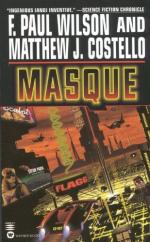|
This section contains 7,153 words (approx. 24 pages at 300 words per page) |

|
SOURCE: “The Masks of Cupid and Death,” in Comparative Drama, Vol. 29, No. 1, Spring, 1995, pp. 38-60.
In the following essay, Dundas discusses James Shirley's masque Cupid and Death in relation to other Renaissance variations on the theme of love and death.
I
The repetition of the same syllable in the Latin words amor and mors could, in the Renaissance, seem to confirm with lightning speed an essential relationship between these two apparent opposites, love and death. Amor, in short, contains mors.1 But whatever language was used in poems and the poetic drama of the sixteenth and seventeenth century, “love” often called for its opposite, “death.” One fable in particular epitomized and dramatized the truth of this relationship. In a widely influential version, Alciati turned the story of the interchange of the arrows of Love and Death into an emblem.2 If its moral is somewhat ambiguous, or at least subject...
|
This section contains 7,153 words (approx. 24 pages at 300 words per page) |

|


